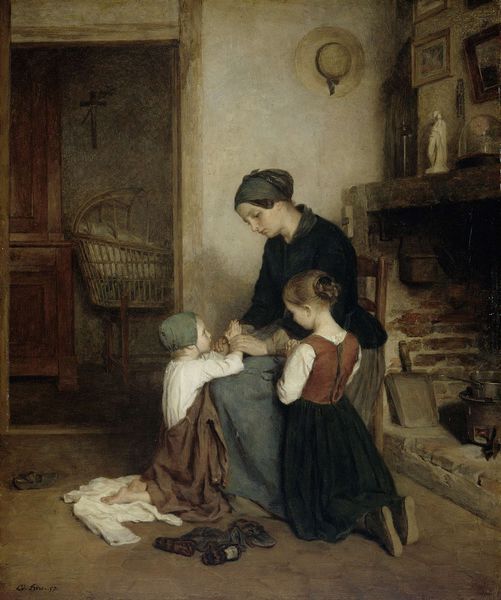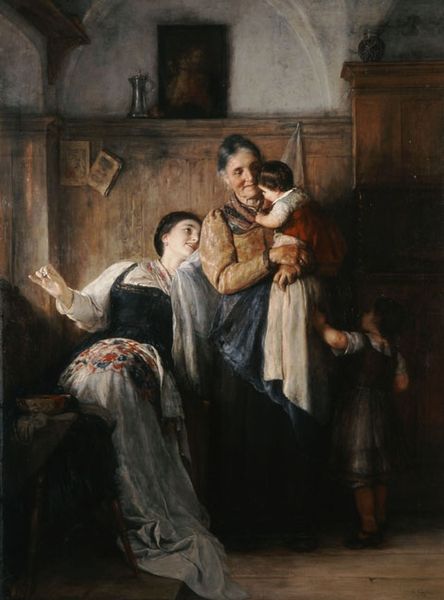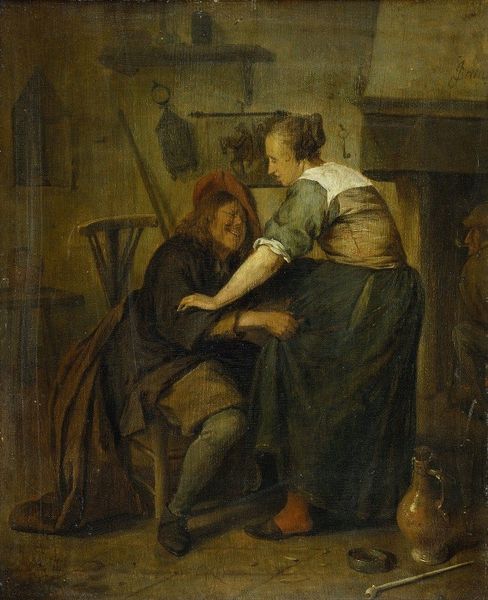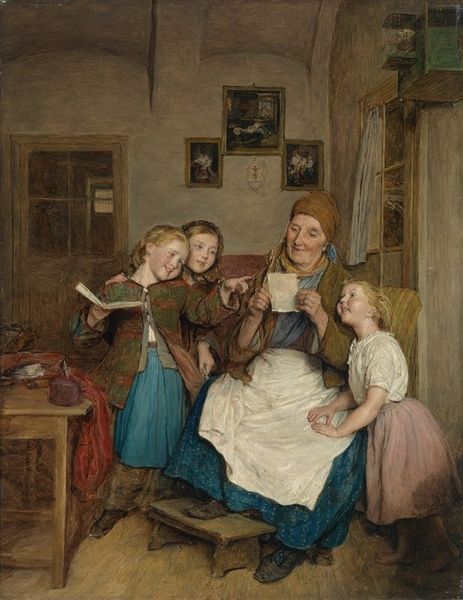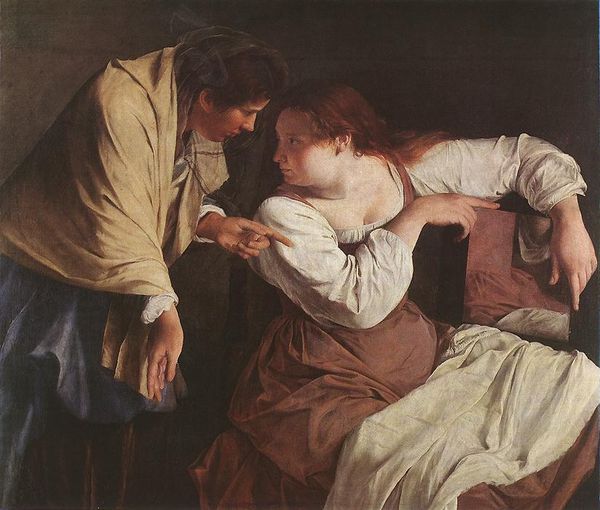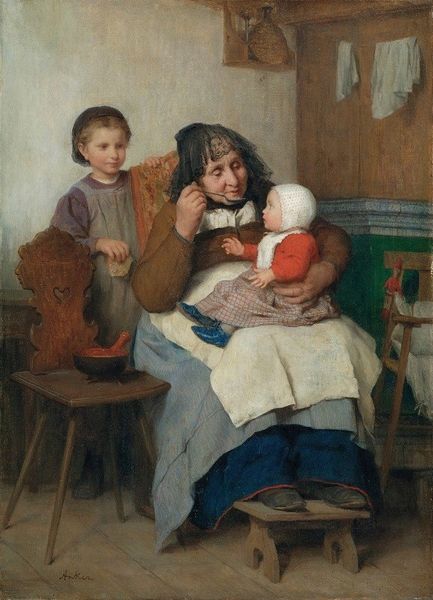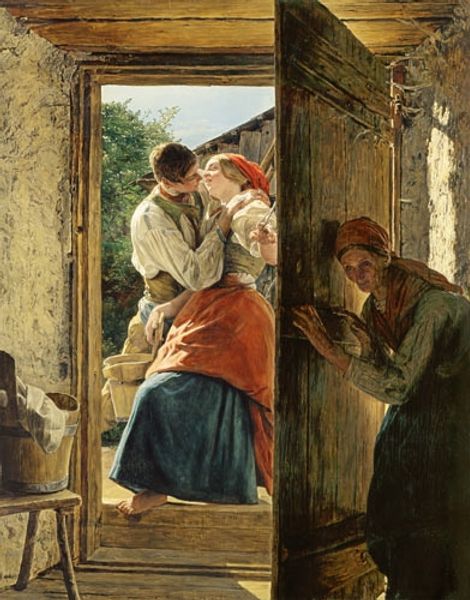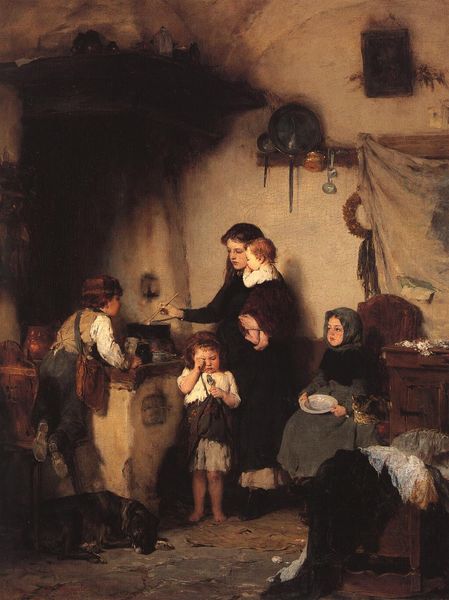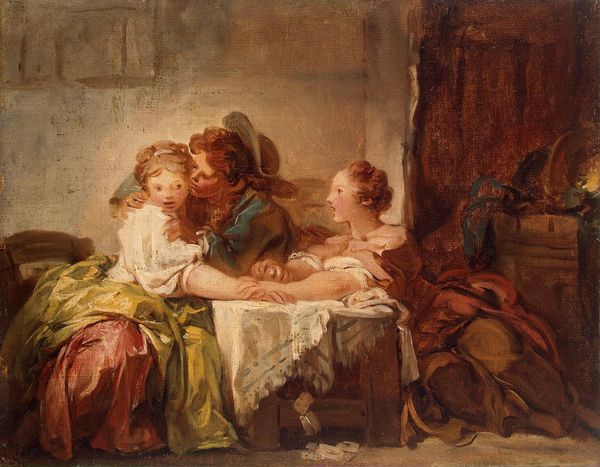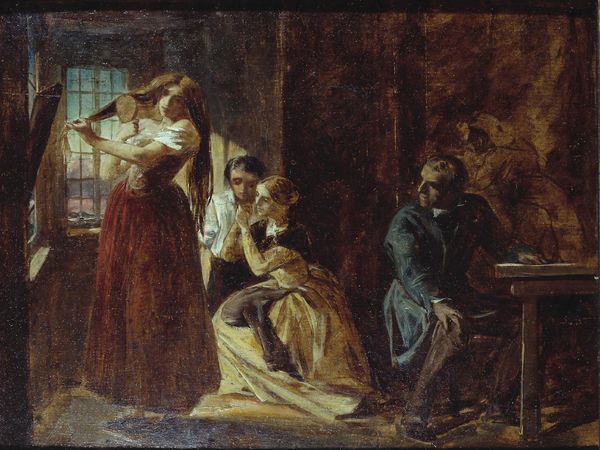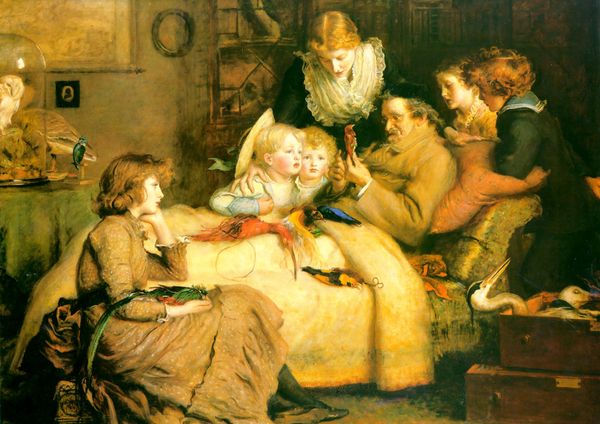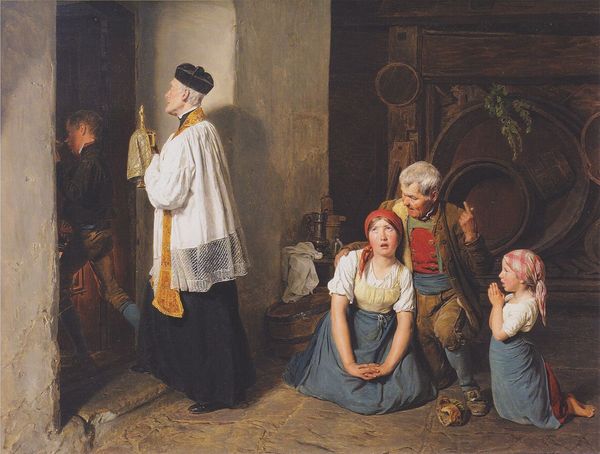
Copyright: Public domain
Curator: Ferdinand Georg Waldmüller's painting, “Grandma’s Birthday,” completed in 1856 using oil paints, presents us with a domestic scene radiating warmth. What strikes you immediately about it? Editor: There's a palpable sense of generational love. The composition draws your eye to the tender embrace between the grandmother and her grandson, with a protective older sister nearby, framed by the slightly claustrophobic interior space. Curator: Precisely. Waldmüller excelled in capturing everyday life within the context of Biedermeier Vienna, emphasizing domesticity and familial bonds. We see in "Grandma's Birthday" a representation of generational continuity and tradition within a rapidly changing world. Consider how gender is represented. The painting reflects contemporary, and restrictive, social expectations. Editor: You're right, and that is highlighted through symbolic use of light and shadow. Grandmother sits cloaked in a red headscarf. Do you think the artist wanted to imply that she is passing on her culture, maybe beliefs? There are framed pictures behind the girl and the boy but the colors of those paintings are a blur. Were family photographs not significant enough at that time to place on a central position? Curator: That's astute, I am inclined to agree with that assertion. The red is of cultural importance that needs further investigating and context, because it holds different connotations from country to country. As a genre painter he aims to create believable, yet possibly idealistic portrayals of domestic life. He is attempting to show something timeless by displaying this family moment for generations to come. Editor: But also very coded to the current politics in Vienna at that time. Perhaps she isn't "passing down" so much but the older children in this image are more like a protection, guards or buffers? Curator: Interesting that you say that... let's consider how we could re-frame and use these notions when we contextualize them for the public. Editor: It could definitely be more interesting by digging more deeply into why the artist decided on these representations. There must have been strong significance because he certainly didn't skimp on those intricate details of texture, fabrics and emotions. Curator: Certainly an image to ruminate about familial history and to what it symbolizes now for a contemporary audience! Editor: I agree, thinking about family through the ages, and what remains behind in cultural visualisations is something the image continues to give today.
Comments
No comments
Be the first to comment and join the conversation on the ultimate creative platform.
